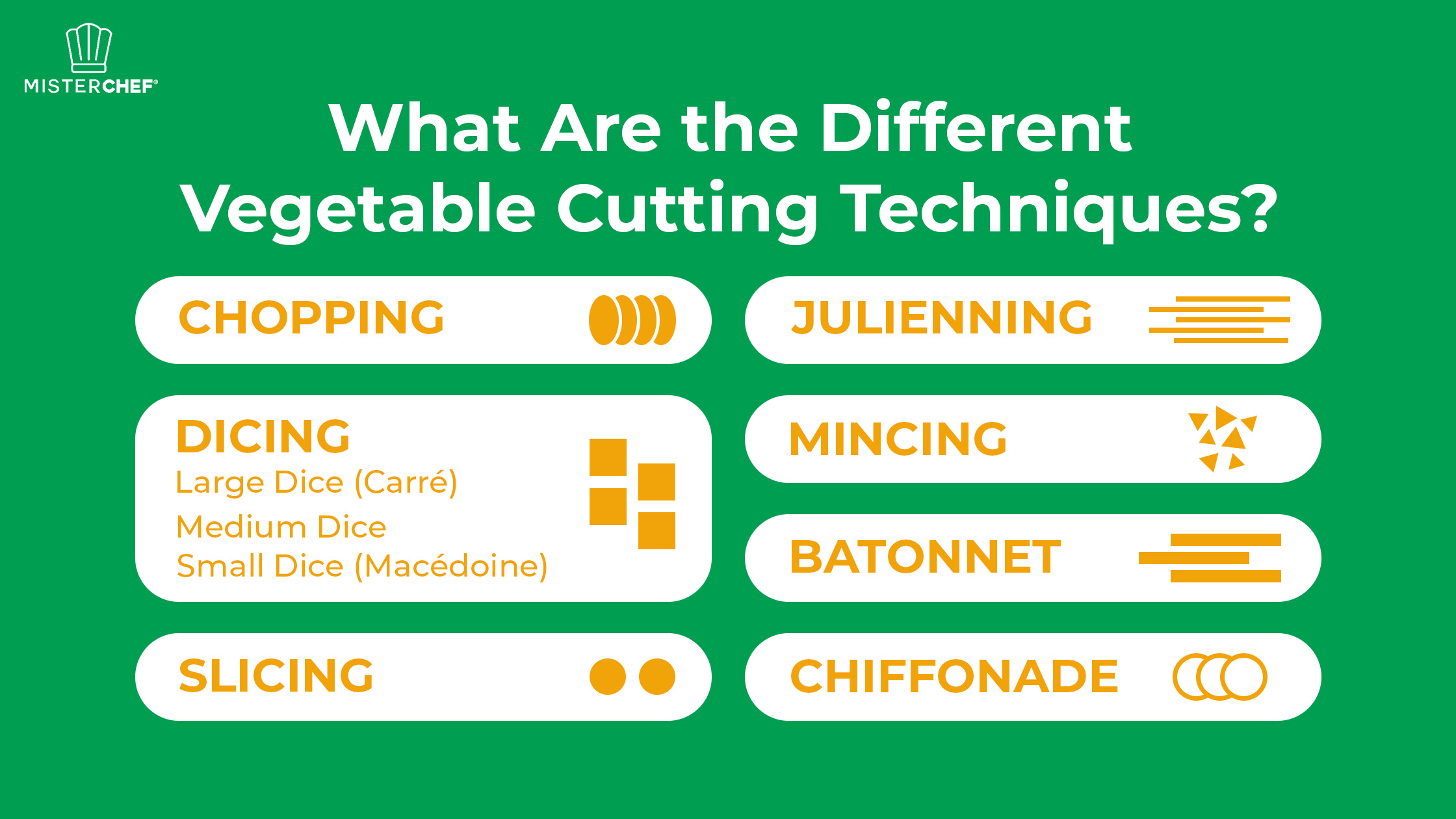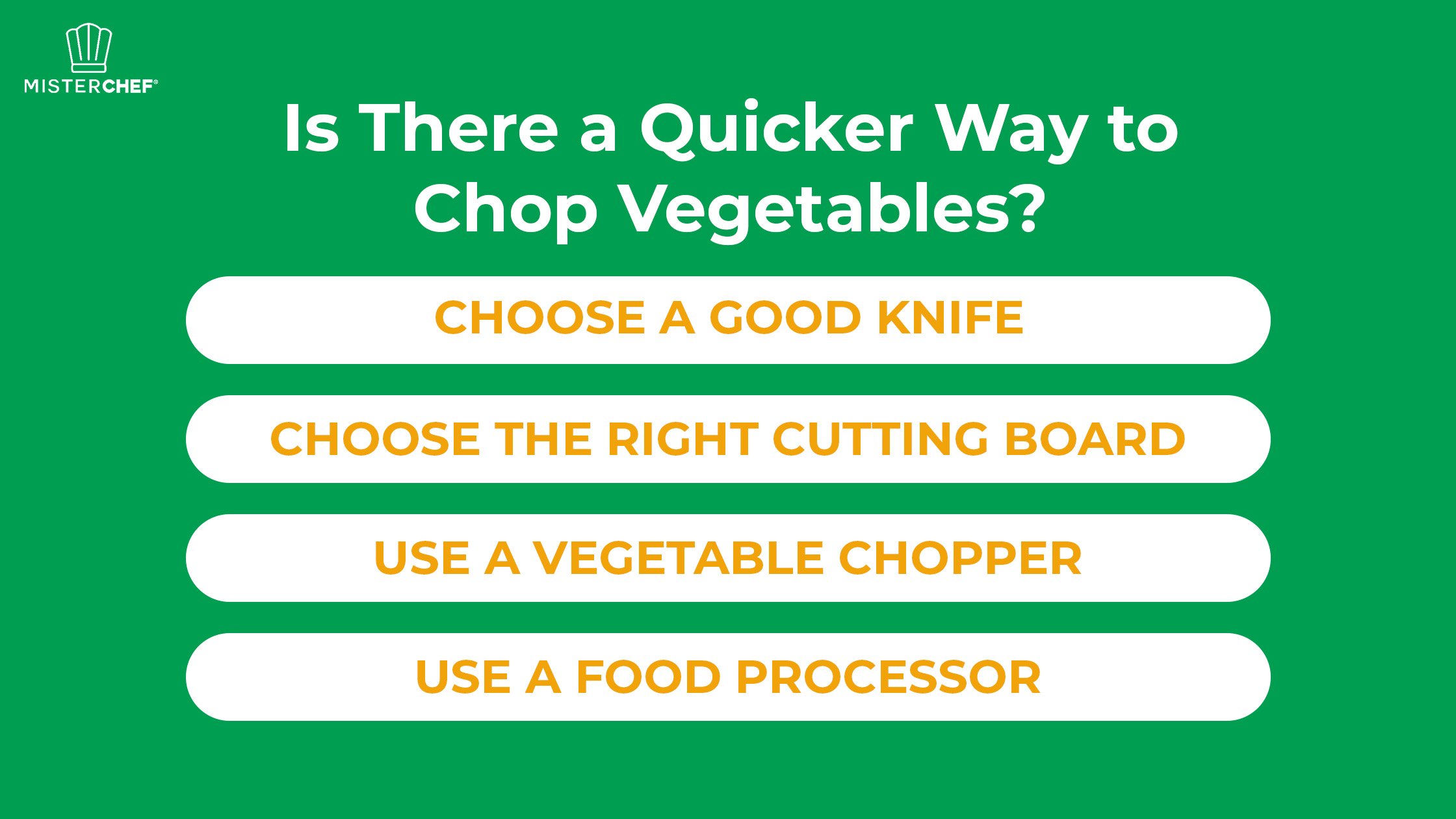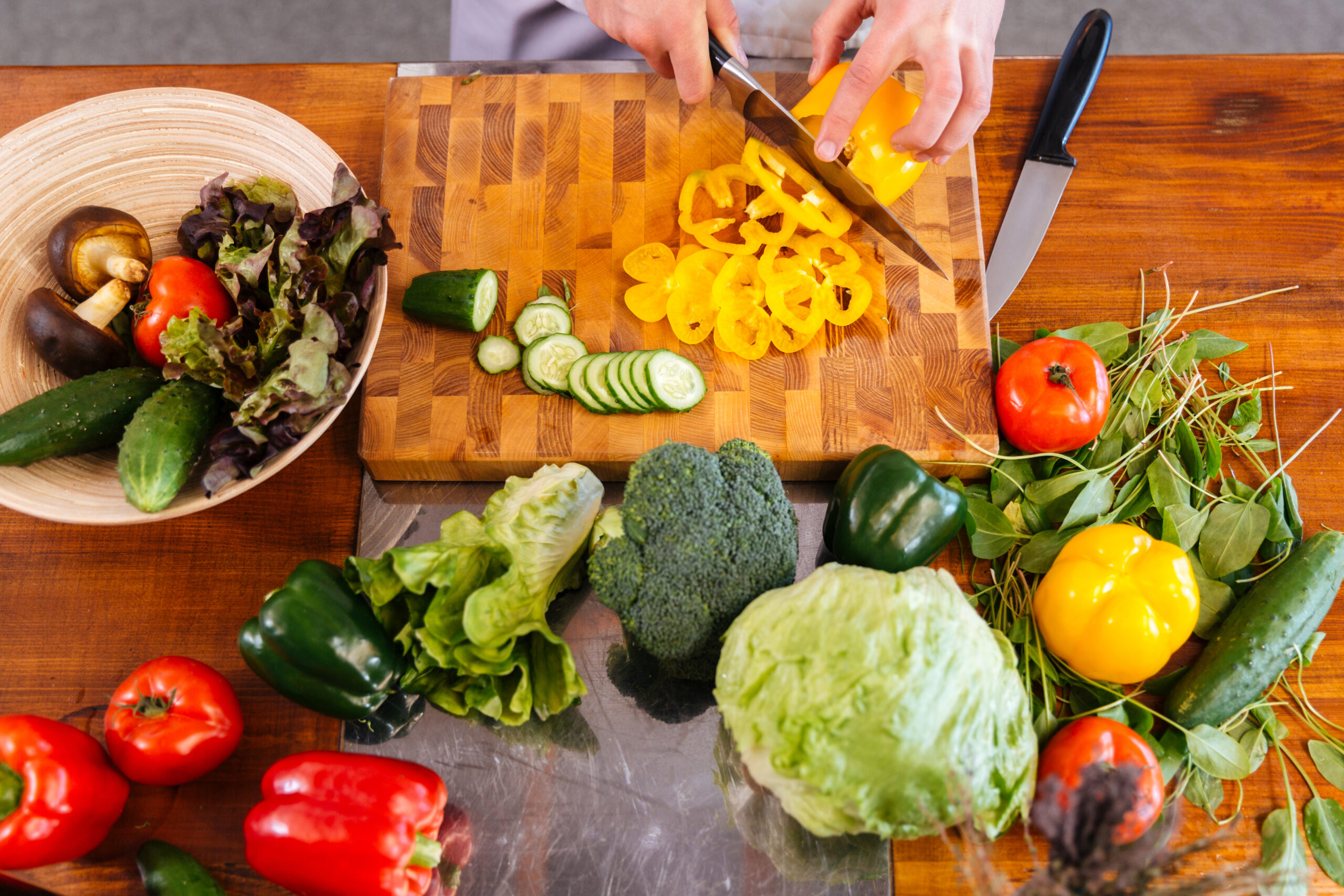Many people find the prep work for cooking, especially chopping vegetables, to be the most tedious part. If you’re not used to it, this part alone can eat up hours of your time especially if you’re making an elaborate dish. So how do you quicken the process? In this guide, we’ll share some quick vegetable-cutting techniques to speed up the process.
What Are the Different Vegetable Cutting Techniques?

When it comes to cutting vegetables, it’s not just about roughly chopping everything up. Depending on the recipe, you might need different sizes and techniques. Here are some basic cutting techniques:
1) Chopping
This is the most basic technique where you cut vegetables into bite-sized pieces. It doesn’t require uniformity in size or shape. It’s commonly used for recipes where the look of the ingredients does not matter, like stews or soups.
2) Dicing
Dicing involves cutting food into cube-shaped pieces. There are three main sizes in dicing:
Large dice (Carré): These cubes are about 3/4 inch on each side. It’s suitable for dishes with longer cooking times like roasts or certain stews.
Medium dice: These are typically 1/2 inch on each side. This size is ideal for most uses including sautés and salads.
Small dice (Macédoine): These are fine 1/4-inch cubes. They’re used for dishes where vegetables need to cook quickly or be well-integrated, such as in sauces or omelets.
3) Slicing
Slicing involves cutting vegetables into thin, even pieces. This technique is used where cooking time and texture are important. You can slice in two main ways: round slices or longitudinal slices.
Round slices are where you slice thinly across the stem to create circular pieces. This method is often used for carrots, cucumbers, and potatoes. Longitudinal slices are where you slice the vegetable lengthwise. It’s often used for eggplant, zucchini, and bell peppers.
4) Julienning
This technique involves cutting food into long, thin strips, similar to matchsticks. It’s great for stir-fries, garnishes, or salads where you want a bit of crunch. Compared to the other methods, it’s a bit time-consuming and may require a bit of practice.
5) Mincing
Mincing is cutting vegetables into very small pieces, finer than chopping. It’s done by first roughly chopping the vegetable and then quickly cutting through each bit with short knife strokes. This is often used for ingredients like garlic, onions, and herbs that need to blend well throughout a dish or when their flavor needs to infuse quickly into a sauce or dressing.
6) Batonnet
Batonnet refers to cutting vegetables into sticks that are about 1/4 inch thick and 2-2.5 inches long. This cut is similar to julienne but thicker. It’s commonly used as a base for dicing or enjoyed in dishes like crudité where larger, consistent pieces are preferred.
7) Chiffonade
This technique is used for leafy greens and herbs. You stack the leaves, roll them tightly, then slice across the roll to produce fine ribbons. It’s excellent for garnishes, adding herbs to dishes, or creating delicate salad toppings.
Is There a Quicker Way to Chop Vegetables?

Yes, there are several methods to speed up the vegetable chopping process. Some of these methods include:
1) Choose a Good Knife
For most vegetable chopping, you can choose a chef’s knife. For smaller or more delicate vegetables, such as mincing garlic or herbs, you can go for a paring knife. If you’re cutting vegetables with tougher skins like tomatoes, opt for a serrated knife.
Remember to make sure your knife is sharp at all times. A sharp knife requires less force to cut through vegetables, which speeds up the work and reduces the risk of accidents.
2) Choose the Right Cutting Board
Believe it or not, the cutting board you use can really affect your chopping. Pick a large, sturdy board so that you have ample space to cut multiple vegetables at once without crowding. Also, make sure to go from wood or bamboo since they are durable and less harsh on knife blades compared to plastic or glass boards. Lastly, go for a board that has a non-slip base, or place a damp towel underneath to prevent it from sliding while you chop.
3) Use a Vegetable Chopper
If you are a home cook cutting a large quantity of vegetables, the vegetable chopper is a handy tool that can significantly reduce the time. These choppers come in various forms, including manual push choppers, hand-cranked versions, and electric models. They typically offer different blades for slicing, dicing, and chopping in various shapes and sizes. They also come in different sizes from mini to large to handle different quantities. If you’re looking for a mini size chopper, check out MisterChef’s Mini Chopper.
4) Use a Food Processor
A food processor is another powerful tool you can use if you have large quantities of vegetables to chop. It comes with various attachments that can slice, dice, mince, and even grate vegetables in seconds.
To use a food processor effectively, fit it with the appropriate blade, add the vegetables (quartered or halved to fit the feed tube), and pulse until you achieve the size you want.
Summary
Chopping vegetables doesn’t have to be a time-consuming part of meal prep. With the right tools and techniques, you can significantly speed up the process. From using a sharp, appropriate knife to using a vegetable chopper or food processor, each method mentioned in this blog can help you chop vegetables faster.
Are you ready to speed up your kitchen prep? Check out MisterChef Mini Chopper! Whether you’re dicing an onion, mincing a garlic clove, or preparing veggies for a salad, our compact and powerful chopper handles it all with ease. Shop with us today.







